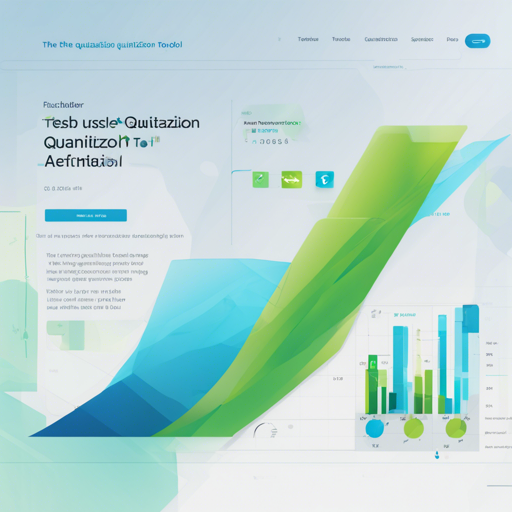Welcome to the exploration of the PPL Quantization Tool (PPQ) version 0.6.6! This powerful tool is designed to optimize quantization passes for models, enhancing performance and reducing resource consumption. In this guide, we will walk you through the installation, basic functionalities, and troubleshooting of PPQ.
What is PPQ?
The PPL Quantization Tool is a software tool that aids in quantization optimization for various deep learning frameworks like TensorRT, OpenPPL, and Onnx. It serves to streamline model performance, making it optimal for hardware deployment while ensuring minimal loss in accuracy.
Installation Steps
To get started with PPQ, follow these simple steps:
- Install CUDA from CUDA Toolkit.
- Install the Ninja build system:
- For Debian/Ubuntu users, run:
bash apt-get install ninja-build - For RedHat/Centos users, run:
yum install ninja-build - For Windows users:
- Download ninja.exe and add it to your Windows PATH.
- Install Visual Studio 2019 from Visual Studio.
- Add C++ compiler to your Windows PATH Environment (typically found at
C:\Program Files\Microsoft Visual Studio\2019\Community\VC\Tools\MSVC\14.16.27023\bin\Hostx86\x86). - Update your PyTorch version to 1.10 or above.
- Clone the PPQ repository and install dependencies:
bash git clone https://github.com/openppl-public/ppq.gitcd ppqpip install -r requirements.txtpython setup.py install- Optionally, you can install PPQ from our Docker image:
bash docker pull stephen222/ppq:ubuntu18.04_cuda11.4_cudnn8.4_trt8.4.1docker run -it --rm --ipc=host --gpus all --mount type=bind,source=your_custom_path,target=workspace stephen222/ppq:ubuntu18.04_cuda11.4_cudnn8.4_trt8.4.1 /bin/bashgit clone https://github.com/openppl-public/ppq.gitcd ppqexport PYTHONPATH=$PWD:$PYTHONPATH- Alternatively, you can install PPQ using pip:
python3 -m pip install ppq
Understanding PPQ’s Functionality
Think of PPQ as a personal trainer for your AI models. Just like a trainer optimizes your workout plan to maximize performance while minimizing strain, PPQ optimizes your AI model’s parameters and structure. These adjustments can make a significant difference in the model’s execution speed and efficiency on various hardware.
Key Functionalities
PPQ provides various functionalities to aid in model optimization:
- [FP8 Quantization](https://zhuanlan.zhihu.com/p/574825662)
- [Quantization-Aware Training (QAT)](https://github.com/openppl-public/ppq/blob/master/ppqsamples/QAT_imagenet.py)
- [Optimal Tuning](https://github.com/openppl-public/ppq/blob/master/ppqsamples/TensorRTExample_Fp32.py)
Troubleshooting
If you encounter issues during installation or usage, here are some troubleshooting tips:
- Check if all dependencies are installed properly.
- Ensure your CUDA and PyTorch versions are compatible.
- Verify that your environment paths are set correctly.
- If an error occurs while executing scripts, review the error message for specific guidance.
- For more insights, updates, or to collaborate on AI development projects, stay connected with fxis.ai.
Conclusion
Using the PPL Quantization Tool can significantly enhance your deep learning models. Whether you’re aiming for better performance or optimization, PPQ is your go-to tool. Start experimenting today to experience the power of quantization!
At fxis.ai, we believe that such advancements are crucial for the future of AI, as they enable more comprehensive and effective solutions. Our team is continually exploring new methodologies to push the envelope in artificial intelligence, ensuring that our clients benefit from the latest technological innovations.

